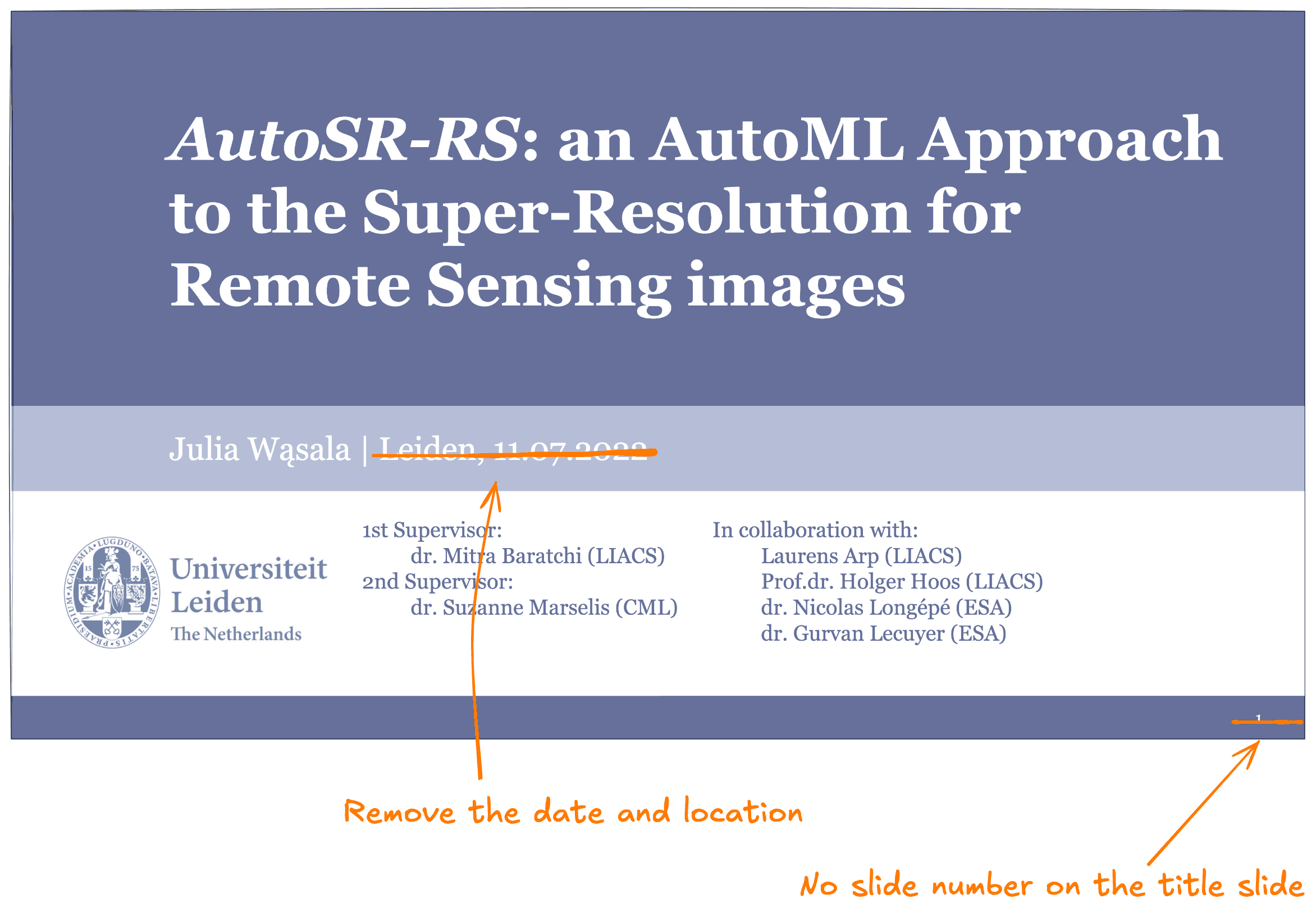
August 20, 2024

Do you want to get better grades for your presentations? Or do you want to impress your research group? Then this guide's for you. I've graded dozens of Master student presentations, and some feedback points come up repeatedly. In this blog, I share all my tips for your presentations at university and show you how I would improve my own master’s thesis defence slides.
The outline:
Rule number 1: Do not assume your audience knows everything you know – you studied this subject, so you will probably know more about it than everyone else!
The students I teach and supervise have to do three types of presentations:
The most important difference between these three types of presentation is the audience. Who your audience is, as well as what they know and what they care about, is your starting point for crafting any form of communication.
For course presentations, your audience is other students in the course. Keep in mind what they know and don't know. Your peers will know lecture materials but not specific datasets or network architectures. A common mistake is that people repeat names or acronyms of methods only they are familiar with. Take the time to introduce all the new techniques or find a simpler way to talk about them.
Presentations in your research group (during your thesis research) are opportunities to practice presenting for scientists. Your goal is to treat these presentations as practice runs for presenting at conferences. Your supervisors will know your topic very well, but the other PhD students, Post-Docs and professors in the group won't. They are your audience: scientists who are familiar with your field but not with the specific topic. So, think carefully about what they may or may not know, and give the other group members enough context to understand your research problem.
Finally, your thesis defence should be understandable to all graduating master's students who took similar courses. Though your research group and other master's students are very different audiences, in practice, if your research group presentation is good, your defence will be, too.
Rule number 2: Make it easy to listen to you
The content of your presentation is what you choose to talk about. Your goal is to make it as easy as possible for your audience to follow the content. A common mistake I see is that people try to tell too much. But the result is that the audience remembers nothing at all! So, try this instead: aim to make people curious.
To make your audience curious, you need to motivate your topic: why would the audience be interested? Give enough background to make the audience care, but not so much they get distracted.
Removing all irrelevant information is very important for a coherent and engaging presentation. The easiest way to do this is to craft a single take-home message, for instance, "Adding weather information improves crowd flow prediction in setting xyz." Then, make sure everything you say supports that message. Remove all the details that don't help.
Rule number 3: The time your audience spends mentally processing your slides is time not spent listening to what you say.
Even when we publish lists of tips before presentations, students keep losing a lot of points on simple slide mistakes that can be avoided. Many people are tempted to think:
But all these assumptions are wrong!
Your slides, as your content, should be minimal and focused on relaying your key message. Every bit of information you add that doesn't help you actively work against you. You'll need to fight the text-heavy slide for your audience's attention. Very busy slides can completely overwhelm your audience, even if your words are clear. Here are some things you should leave out:
Another common mistake is simply copying things into your slides without changing them. Presentations are a different medium, so they need a different treatment. Here are some things you should modify:
Finally, here are some things students forget to add:
Let’s clarify these points and improve a slide deck from my master’s thesis defence (Read more about my master’s thesis here, and read the paper here). I selected slides illustrating the points above. I lowered the opacity to make the notes stand out more. Improvements are annotated in orange; good elements are in pink.









Rule number 4: Many presentation mistakes are avoidable if you practice.
The final component of good presentations is your delivery. Delivery is how you speak, use body language, interact with the slides, and manage time. While students don't lose a lot of points on this, there's a very easy way to improve your delivery: it's practice!
As a student, I was guilty of not practising. I could improvise the presentation well if I prepared the content and slides. But that made me miss out because of a few reasons:
Here are some more tips for delivering a strong performance:
This blog covered how to avoid common mistakes in master's presentations. Here are some more resources if you love presenting and want to learn more:
Finally, don't hesitate to contact me if any of these are unclear or if you have tips to add to the list.